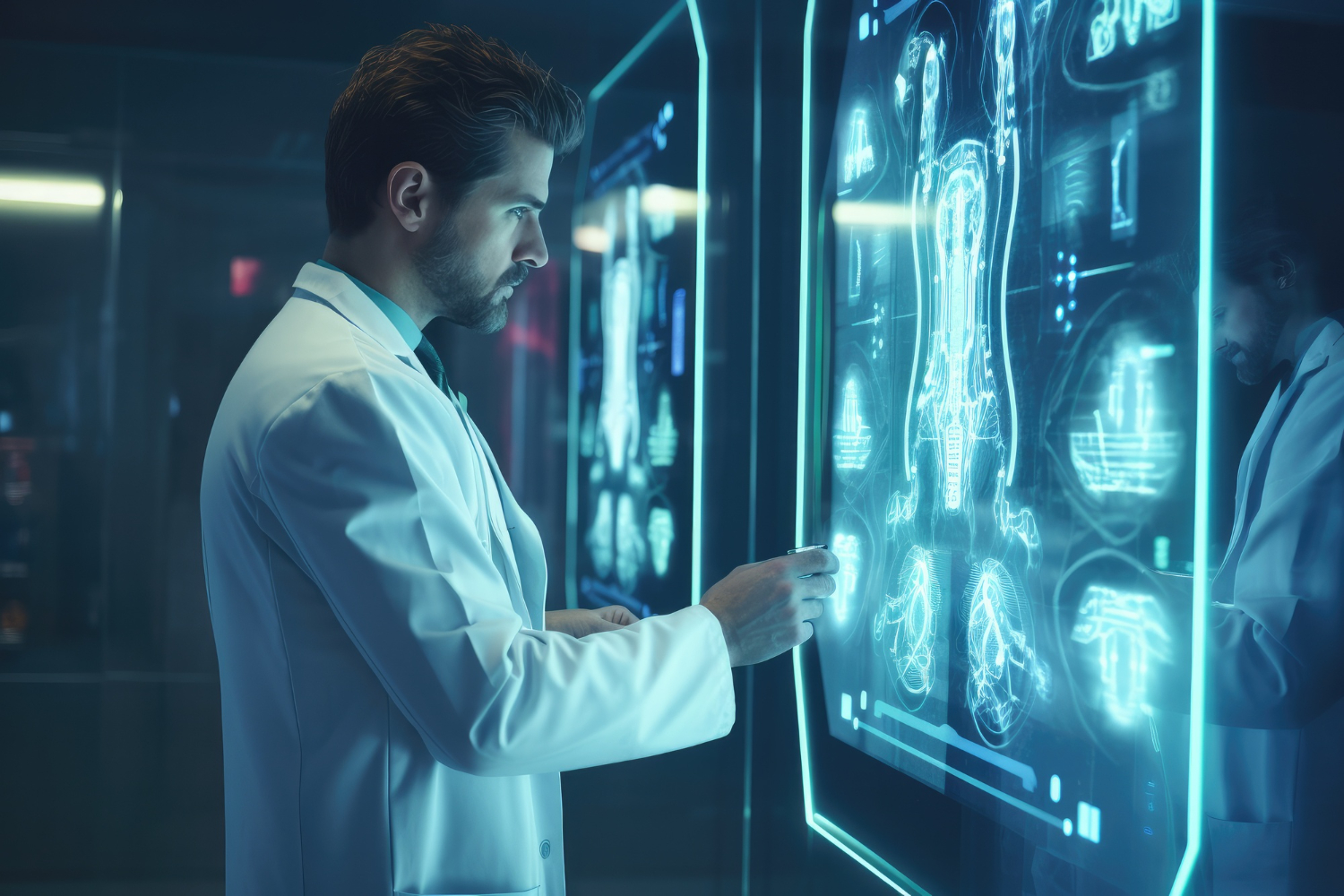Digital X-Ray
Digital X-ray, also known as digital radiography (DR), is a modern imaging technique that uses digital technology to capture and store X-ray images. Traditional X-ray imaging involves the use of film to record images, whereas digital X-ray utilizes electronic sensors to capture the image data, which can then be viewed and stored on a computer.
Here's how digital X-ray works:
- Image Capture: Instead of using film, digital X-ray machines use electronic sensors called detectors to capture X-ray images. These detectors convert the X-ray photons that pass through the body into electrical signals.
- Processing: The electrical signals generated by the detectors are converted into digital data by an analog-to-digital converter. This digital data represents the X-ray image.
- Display and Storage: The digital X-ray images can be immediately viewed on a computer monitor, allowing for quick analysis and diagnosis. They can also be stored electronically in a Picture Archiving and Communication System (PACS), which enables easy access to patient images for healthcare providers.
Digital X-ray offers several advantages over traditional film-based X-ray imaging:
- Faster Image Acquisition: Digital X-ray images can be obtained and viewed almost instantly, reducing the time patients spend in the imaging department.
- Lower Radiation Dose: Digital X-ray systems typically require lower radiation doses compared to film-based systems, resulting in reduced radiation exposure for patients.
- Improved Image Quality: Digital X-ray images can be manipulated and enhanced digitally to improve visibility of anatomical structures, aiding in diagnosis.
- Electronic Storage and Transmission: Digital X-ray images can be stored indefinitely in electronic format and easily transmitted to other healthcare providers for consultation or referral.
- Environmentally Friendly: Digital X-ray eliminates the need for film processing chemicals and reduces the amount of waste generated by traditional film-based X-ray systems.
Digital X-ray technology has become widely adopted in medical imaging facilities worldwide due to its numerous benefits and improved efficiency in patient care.

